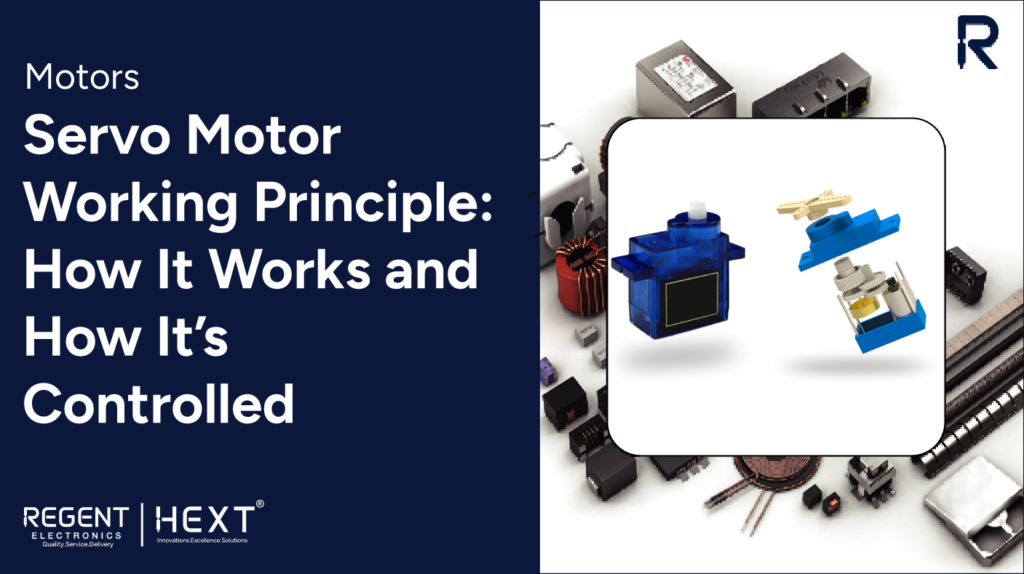
Servo Motor Working Principle: How It Works and How It’s Controlled
Servo motors play a crucial role in modern automation and robotics, especially in applications that demand precise motion control. From robotic vehicles used in defense to metal forming machines in industrial settings, servo motors are at the heart of countless high-precision systems.
In this article, Regent Electronics dives into the working principle of servo motors, including how they operate and how they are controlled using PWM (Pulse Width Modulation).
🧠 What is a Servo Motor?
A servo motor is an electric motor that enables precise control over angular or linear position, velocity, and acceleration. It’s commonly found in applications like robotic arms, CNC machines, antenna positioning systems, RC vehicles, and more.
Servo motors operate based on a closed-loop feedback system, which constantly adjusts the motor’s movement based on feedback from a position sensor.
⚙️ Components of a Servo Motor
A typical DC servo motor consists of the following key components:
- DC Motor – Generates rotary motion.
- Position Sensor (Potentiometer) – Provides feedback on the shaft’s position.
- Gear Assembly – Reduces speed and increases torque while transferring motion.
- Control Circuit – Processes feedback and drives the motor accordingly.
In many modern setups, a microcontroller (like an Arduino) is used to generate PWM signals for accurate control.
⚡ Working Principle of a Servo Motor
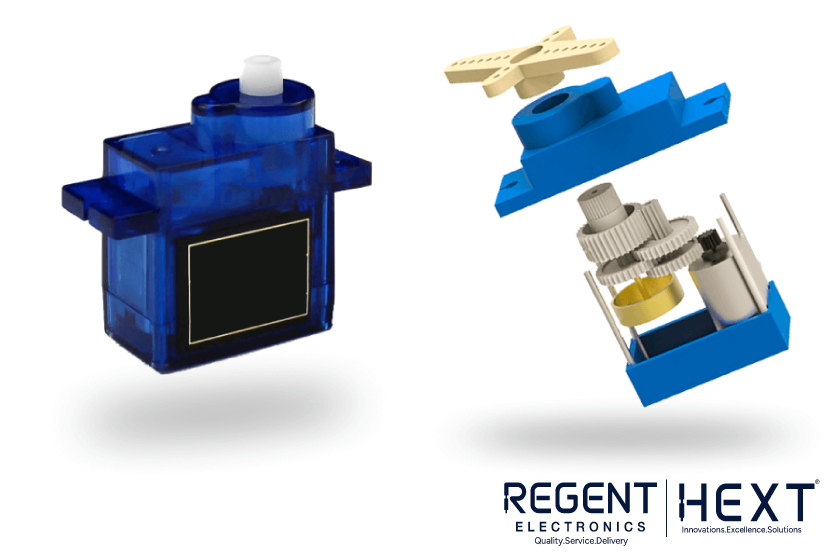
The servo motor operates by comparing the desired position with the current position and adjusting accordingly through feedback.
Here’s how it works:
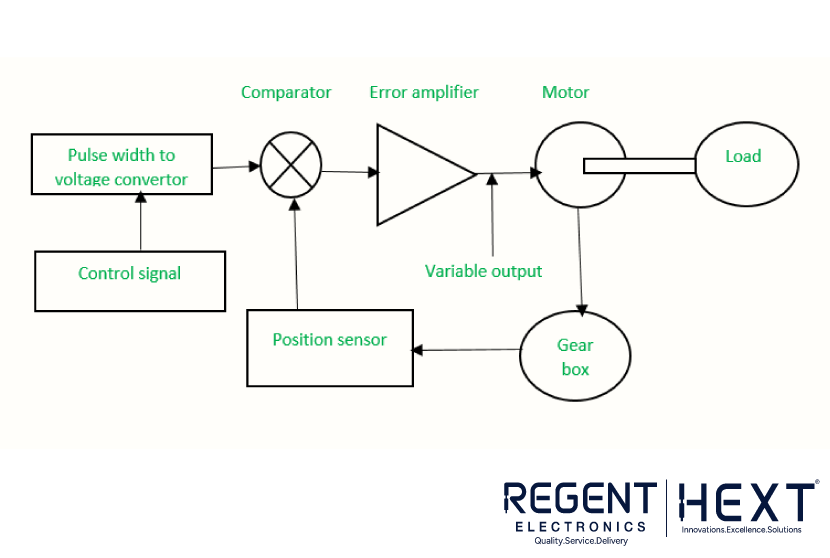
- The position sensor (usually a potentiometer) monitors the current angle of the motor shaft.
- This sensor sends a voltage signal that reflects the current position.
- An error amplifier compares this signal with the desired position signal (from the controller).
- The difference (error voltage) is amplified and sent to the motor’s armature.
- The motor rotates in the direction needed to minimize the error. If the error is large, the motor turns faster. As the error decreases, the speed reduces until it reaches the target position.
If the position is overshot, the polarity of the voltage reverses, and the motor rotates in the opposite direction to correct itself. This constant adjustment ensures precise positioning.
🎛️ How is a Servo Motor Controlled?
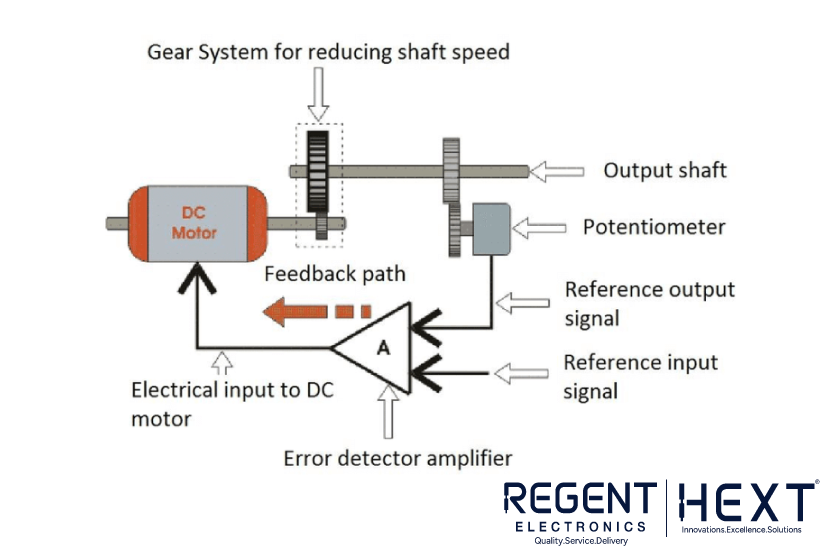
Servo motors are controlled using Pulse Width Modulation (PWM). This involves sending a pulse of varying width at regular intervals to determine the shaft’s position.
Key PWM Concepts:
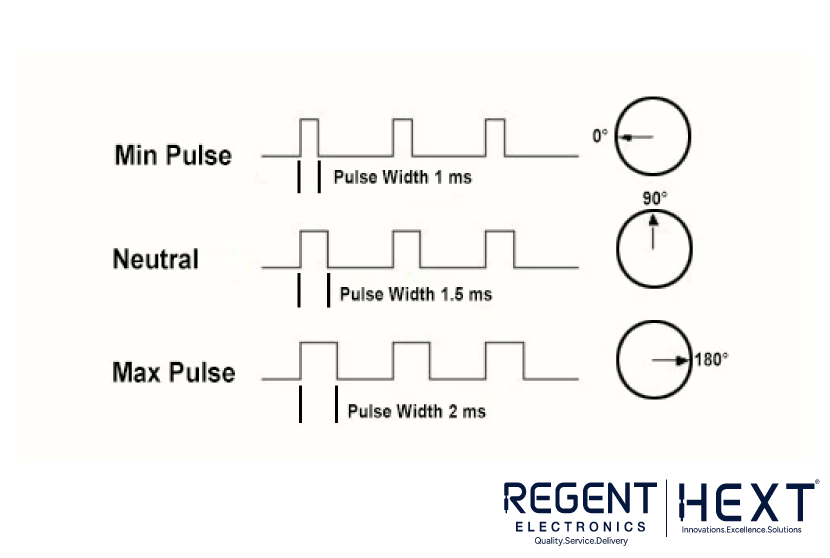
- Pulse Width determines the angular position.
- A 1.5 ms pulse typically sets the motor to the neutral (90°) position.
- A shorter pulse (<1.5 ms) turns the motor counterclockwise (toward 0°).
- A longer pulse (>1.5 ms) turns the motor clockwise (toward 180°).
Example:
- 1 ms pulse → 0°
- 1.5 ms pulse → 90°
- 2 ms pulse → 180°
The pulse must be repeated periodically (typically every 20 ms) to maintain the position. If the pulses stop, the motor may lose its holding position.
🛠️ Internal Mechanism of RC Servo Motors
RC servo motors include a small DC motor, gears, and an internal control board. Here’s how they function:
- Control Pulse is sent to a pulse-width-to-voltage converter.
- This converter charges a capacitor during the pulse high time.
- When the pulse ends, the stored voltage is compared with the feedback signal.
- The error signal controls the direction and duration of the motor’s movement.
This process allows the servo motor to respond accurately to control signals, making it ideal for applications requiring precise movement and stable positioning.
🔩 Why Servo Motors Matter
Servo motors are designed to hold their position with force until a new command is received. This holding force is referred to as the torque rating.
Although highly efficient and responsive, it’s important to note that servo motors will not maintain their position indefinitely unless they continue receiving PWM signals.
🎯 Final Thoughts
Understanding the working principle of servo motors is essential for anyone involved in robotics, automation, or motion control systems. These compact yet powerful devices offer high torque, accurate positioning, and quick response, making them a go-to solution across industries.
At Regent Electronics, we provide a wide range of servo motors, controllers, and development boards to help bring precision to your projects—whether you’re a hobbyist or working on a professional automation system.
